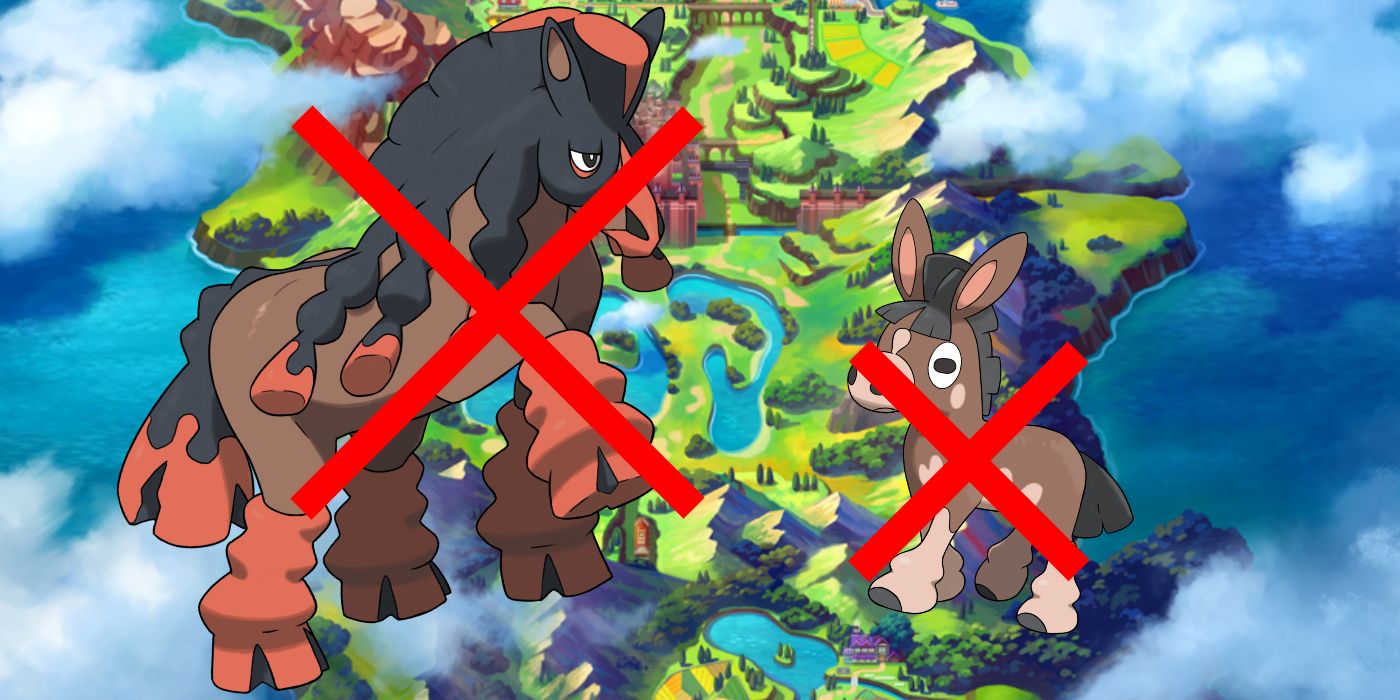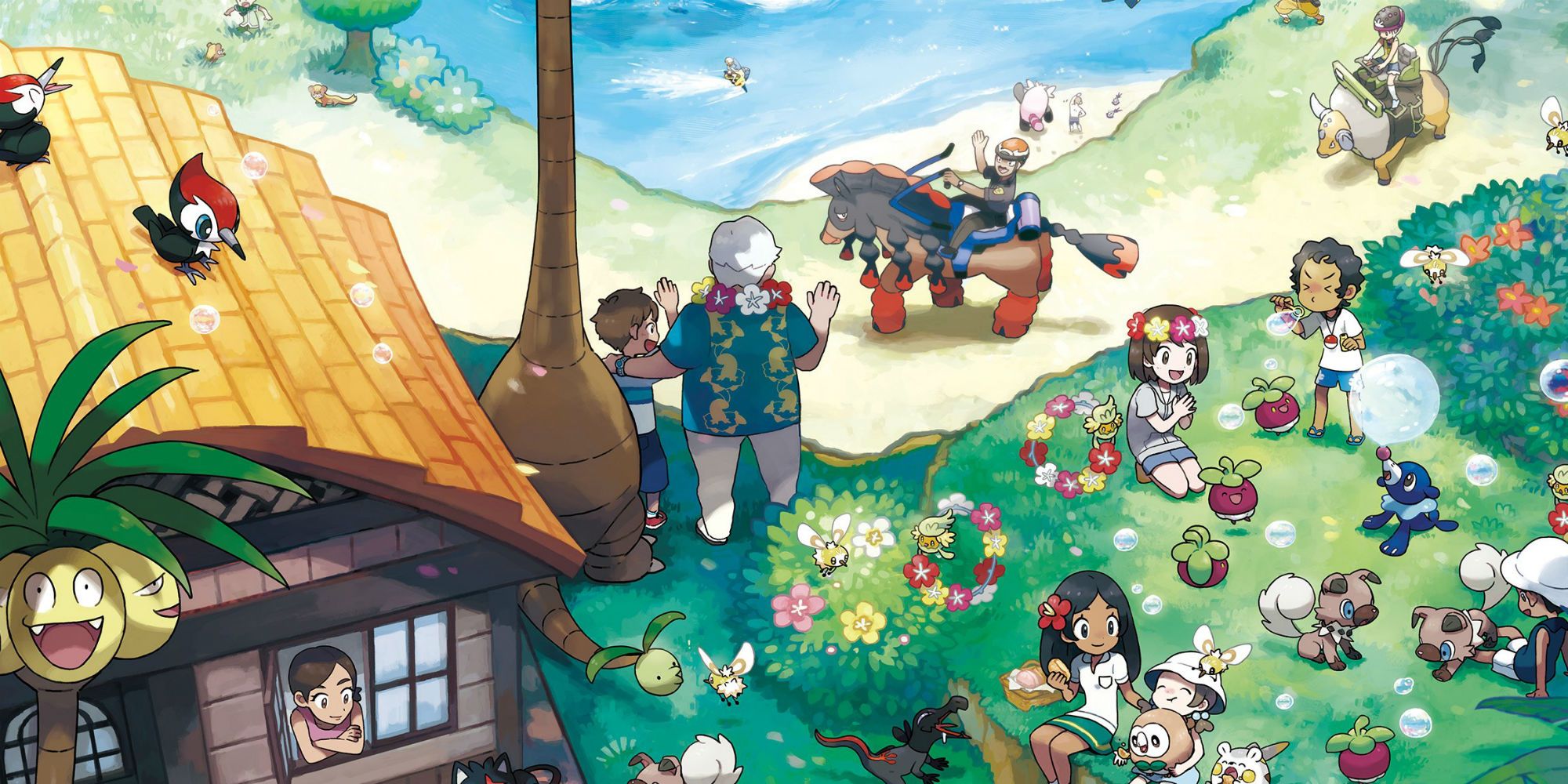Mudbray and Mudsdale, two of Pokémon Sun and Moon's new additions to the Pokédex, made their return in Pokémon Sword and Shield. But these two creatures don't belong in the new games' Galar region. The origin and backstory of these Ground-type Pokémon make their inclusion in Sword and Shield's England-inspired region seem like an odd oversight.
The Pokémon Sword and Shield Galar region draws design inspiration from England, Ireland, and other Western European countries. As with most Pokémon regions, many of the Pokémon found in Sword and Shield are based on cultural touchstones of Galar's countries of inspiration. The adorable sheep Pokémon, Wooloo, for example, references the prevalence of sheep herds in countries like Scotland and Wales. Mudbray and Mudsdale are the same, specifically referencing Sun and Moon's Hawaii-inspired Alola region.
Real-world Hawaiian donkeys appear to be the inspiration for Pokémon's Mudbray and Mudsdale. Not a unique species, these animals are the descendants of normal, domesticated donkeys brought to the Big Island for use in coffee plantations. Technology eventually made using the donkeys inefficient, so farmers let them go free, leading to a population of about 500 feral donkeys roaming the island. These became a hazard for drivers and a general nuisance to the human population, so residents threatened to kill them. In response, the U.S. government began an adoption program to move the donkeys back into captivity. As of January 2018, only 30 feral donkeys remained, according to West Hawaii Today.
While this story provides an explanation for the origins of Mudbray and Mudsdale's designs, the Pokémon's in-game backgrounds are much darker. Rather than former domesticated creatures with a population nearing zero due to peaceful adoption, The Pokémon Company describes Alola's Mudbray as the last of a species that once lived all around the world, overhunted to the point that "it is said" Alola is the last place they can be found in the wild. This brings up questions about humans hunting and eating Pokémon, but it also has confusing implications for Sword and Shield.
The company notably left things vague as far as whether another population of Mudbray could suddenly be discovered elsewhere, but it's odd that Mudbray and Mudsdale showed up in the new games without so much as a mention of their supposed Alolan isolation. Granted, many Pokémon appear or are even introduced in regions that don't make much sense for their lore and origins, but Mudbray and Mudsdale's specifically mentioned region-exclusivity makes their inclusion especially jarring. Perhaps if they were given regional variants like some of Sword and Shield's Galarian-form Pokémon, Mudbray in Galar would feel more natural.
Pokémon Sword and Shield released on November 15, 2019, for the Nintendo Switch.


